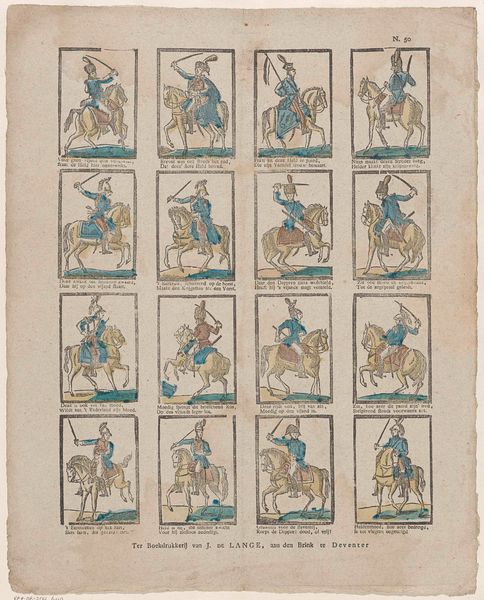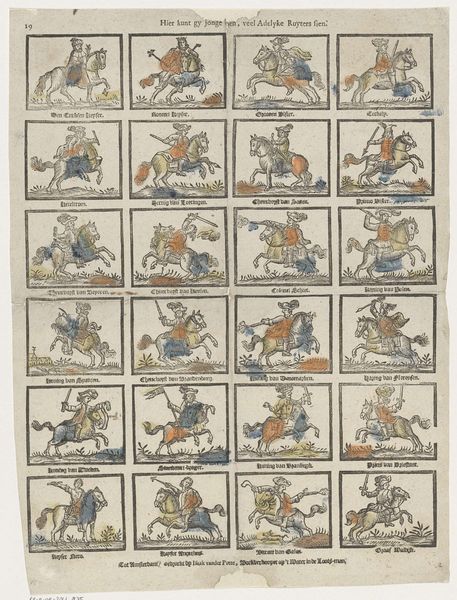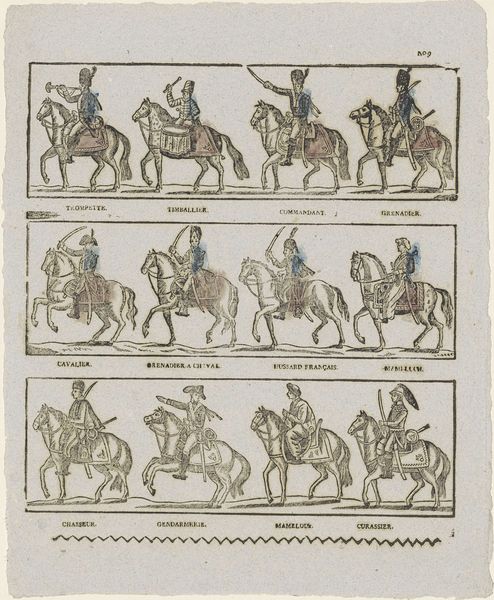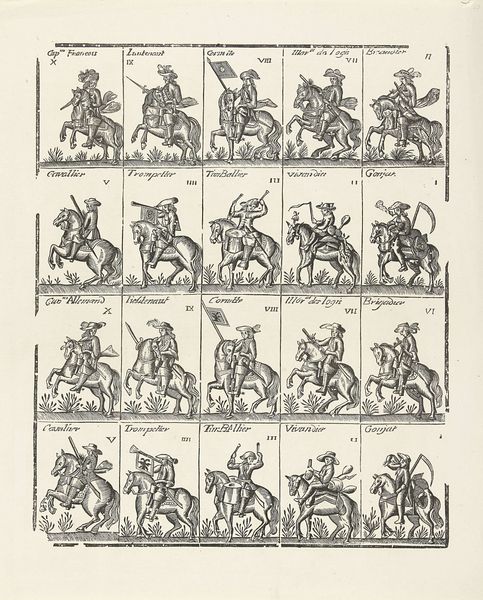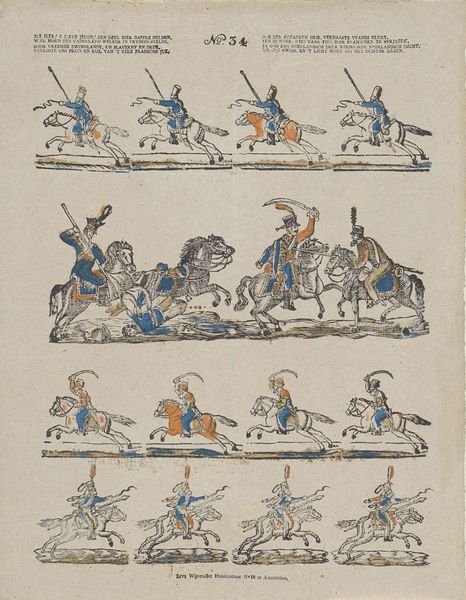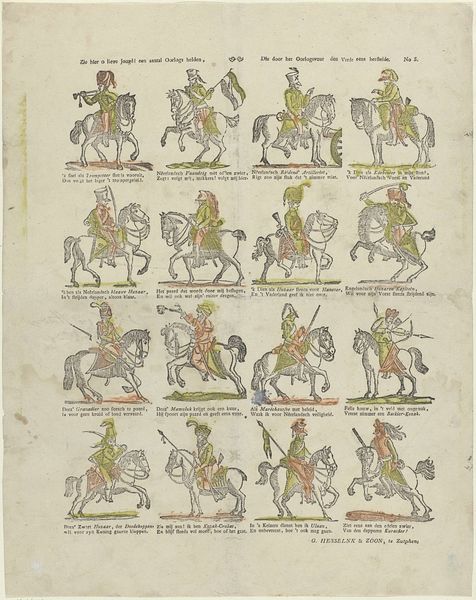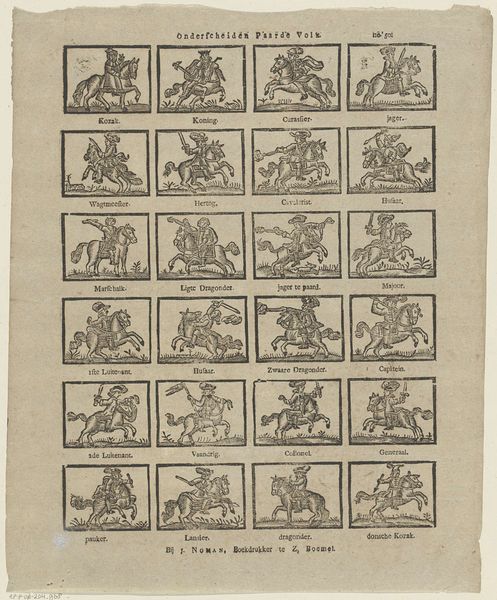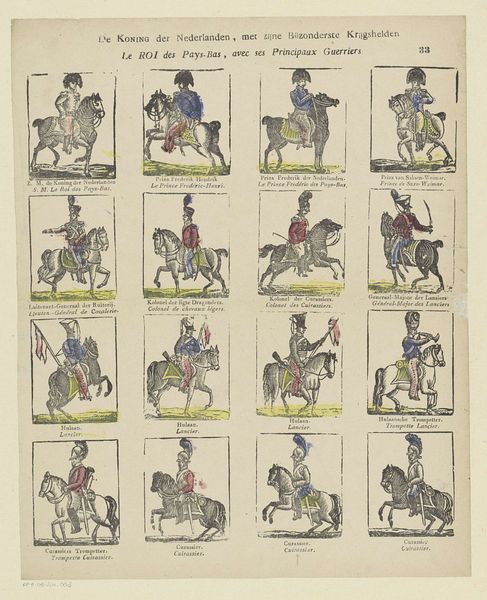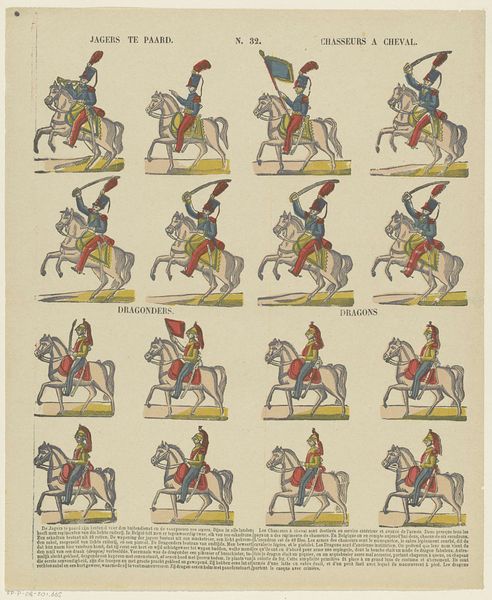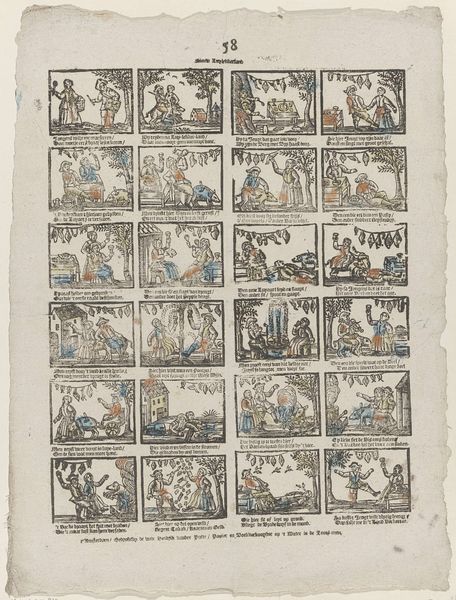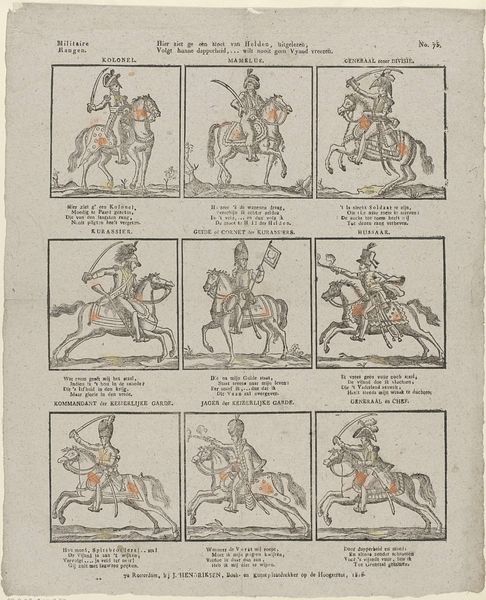
print, engraving
#
narrative-art
# print
#
old engraving style
#
ink colored
#
pen work
#
genre-painting
#
history-painting
#
engraving
Dimensions: height 392 mm, width 315 mm
Copyright: Rijks Museum: Open Domain
Curator: Ah, yes, "Militairen te paard," or "Military Men on Horseback." This engraving, housed here at the Rijksmuseum, comes to us from the early to mid-19th century, anywhere between 1822 and 1849, crafted by Jan de Lange the Second. It’s intriguing to observe the artistic and printmaking techniques of this period. Editor: You know, my first thought? Playing cards. Or some beautifully antiquated sticker sheet. Each little vignette, a perfect pose. There’s a curious stoicism to these military men, despite the fact that they all brandish swords. It is slightly haunting. Curator: Indeed. The method would have involved meticulous carving and etching, revealing the narrative element central to Jan de Lange’s works. He had a printing shop in Deventer, so the intention probably was broad distribution and accessibility. This brings into question the interplay between the artist and the public of that time. Consider how the repetitive nature of the engraving and printing allowed for multiple and accessible impressions. Editor: The text beneath each warrior; a lost language whispers below each image. Did they pin this up on the wall, or maybe a schoolbook? Was it supposed to embolden—or was this some sort of commentary? Perhaps a bit satirical, I like that idea. It’s like little soldiers, each in their individual frame; they carry the same weapons, but look utterly, solemnly, lonely. I think he put each figure, individually, through a great trial to earn his steed. Curator: I am seeing a practical and efficient mode for conveying military iconography to a broader public. And note the ink usage – just limited colored in selected areas, adding only minimal additional detail. The economical employment of materials is remarkable in understanding the costs associated with printmaking during that era, too. The creation itself serves as a record of the socio-economic circumstances. Editor: Yes! Because beyond any historic purpose, there’s a thread here of melancholic magic, and that it becomes strangely amplified and emphasized when looked at as a group of very determined individuals. Perhaps it makes you realize war, too, and how it may or may not be glorified by a generation? A feeling about human purpose, individual, shared, and perhaps, even completely fabricated, perhaps? Curator: I am inclined to agree, I believe it reflects societal expectations concerning artistry, production, and widespread influence that certainly makes for a more thorough examination of De Lange’s world. Editor: Yes, what he had to go through...
Comments
No comments
Be the first to comment and join the conversation on the ultimate creative platform.
